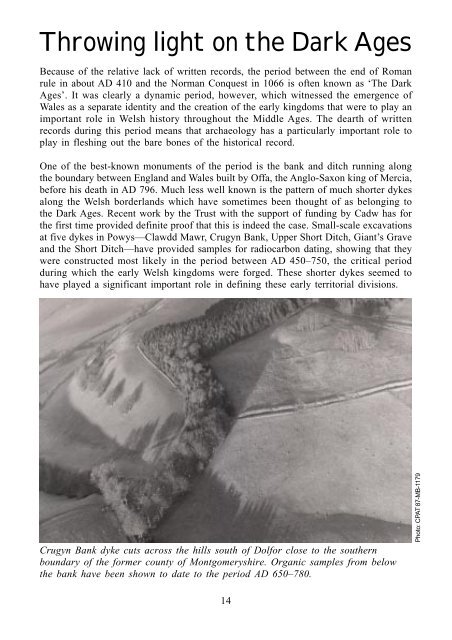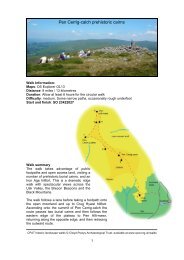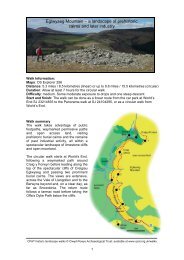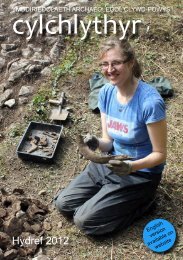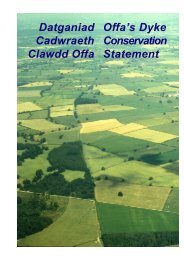Spring 2007 issue - Clwyd-Powys Archaeological Trust
Spring 2007 issue - Clwyd-Powys Archaeological Trust
Spring 2007 issue - Clwyd-Powys Archaeological Trust
- No tags were found...
You also want an ePaper? Increase the reach of your titles
YUMPU automatically turns print PDFs into web optimized ePapers that Google loves.
Throwing light on the Dark AgesBecause of the relative lack of written records, the period between the end of Romanrule in about AD 410 and the Norman Conquest in 1066 is often known as ‘The DarkAges’. It was clearly a dynamic period, however, which witnessed the emergence ofWales as a separate identity and the creation of the early kingdoms that were to play animportant role in Welsh history throughout the Middle Ages. The dearth of writtenrecords during this period means that archaeology has a particularly important role toplay in fleshing out the bare bones of the historical record.One of the best-known monuments of the period is the bank and ditch running alongthe boundary between England and Wales built by Offa, the Anglo-Saxon king of Mercia,before his death in AD 796. Much less well known is the pattern of much shorter dykesalong the Welsh borderlands which have sometimes been thought of as belonging tothe Dark Ages. Recent work by the <strong>Trust</strong> with the support of funding by Cadw has forthe first time provided definite proof that this is indeed the case. Small-scale excavationsat five dykes in <strong>Powys</strong>—Clawdd Mawr, Crugyn Bank, Upper Short Ditch, Giant’s Graveand the Short Ditch—have provided samples for radiocarbon dating, showing that theywere constructed most likely in the period between AD 450–750, the critical periodduring which the early Welsh kingdoms were forged. These shorter dykes seemed tohave played a significant important role in defining these early territorial divisions.Crugyn Bank dyke cuts across the hills south of Dolfor close to the southernboundary of the former county of Montgomeryshire. Organic samples from belowthe bank have been shown to date to the period AD 650–780.Photo: CPAT 87-MB-117914


